How to Save Energy in Your Home — And Do It in Style
Posted
on November 2, 2020
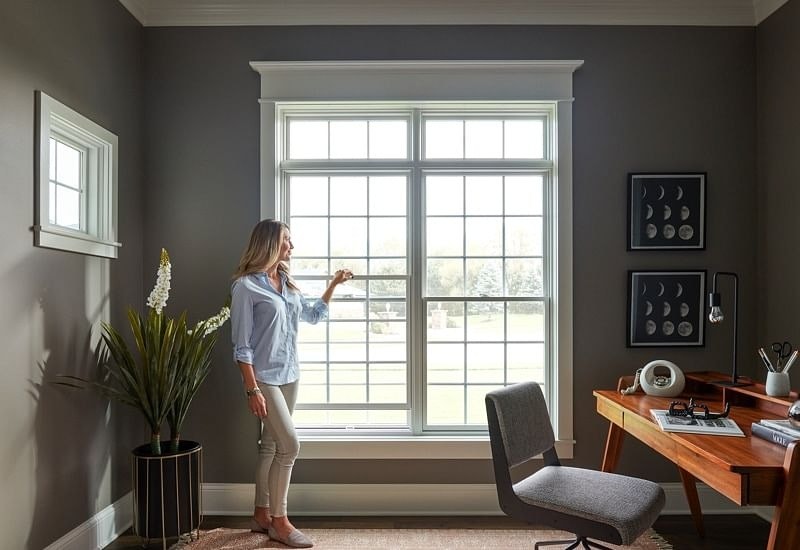
Early on, energy-efficient products weren’t always eye-catching. The light bulbs looked different. The appliances and smart technology were monochromatic and modern. That might have been too stark a contrast from the character of your home or for your own tastes.
You may still find many energy-efficient home upgrades more effective than attractive. But there are many ways to save energy that can boost your home’s aesthetic along with its efficiency.
7 Ways to Conserve Energy and Preserve Style
Homeowners upgrade to energy-efficient home products for two reasons. They’re easier on the environment and, over time, easier on the wallet. These energy-efficient home design ideas are also easy on the eyes.
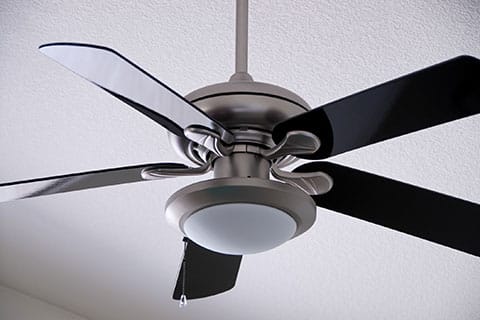
1. Energy-Efficient Ceiling Fans
Ceiling fans come in an ever-widening array of sizes, shapes and styles. They might seem simple, but they can have a significant impact on your heating and cooling costs. By creating a wind-chill effect, ceiling fans allow you to turn up the AC by about 4°F in the summer while maintaining the same level of comfort.1 Set your fans to counterclockwise in the summer to create this effect. Then, flip the setting to clockwise in the winter to pull heat down from the ceiling and spread it around the room.
You can do this with a ceiling fan of any type or style. But you can also upgrade to an energy-efficient or ENERGY STAR® certified ceiling fan. ENERGY STAR ceiling fans are 60% more efficient than standard ceiling fans, rated for their efficiency, quality and performance. Look for products with a high efficacy and long blades to get the most energy efficiency from your fan.
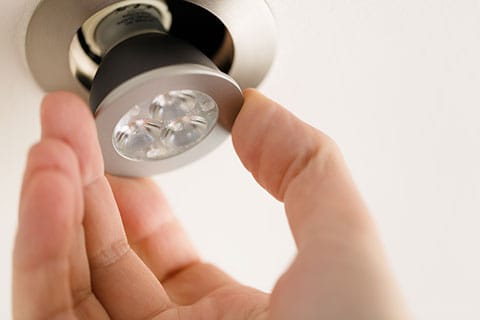
2. LED Light Bulbs and Efficient Fixtures
The average home in the U.S. contains about 70 lightbulbs. And the bulbs you use can add up to big energy savings. Energy-efficient LED lights use up to 90% less energy than old incandescent bulbs. They also last 15 to 25 times longer. Swapping out an old light for an ENERGY STAR certified LED light can save you more than $80 in electricity costs over each bulb’s lifetime.1
It’s not just the bulbs — the fixtures matter too. ENERGY STAR certified light fixtures use 70% to 90% less energy, produce about 70% less heat and last about 15 to 25 times longer.1 While it’s a lot easier and cheaper to replace a light bulb than a light fixture, you can upgrade the fixtures you use most to get the most bang for your buck, slowly building energy-efficient lighting over time.
With advances in design, you can find a variety of lights and fixtures to fit your style. Even more traditional-looking lights come in energy-efficient models now so you can upgrade an older home without making it look too modern.
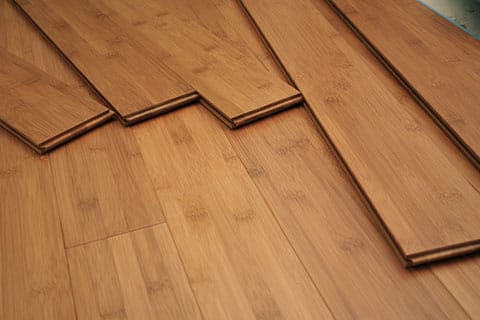
3. Insulating Flooring Materials
The look of your flooring might be the most important factor in your decision-making. Insulation should be just as big of a consideration. Wood, bamboo, cork and vinyl offer the best insulating properties.2 Fortunately, each offers a range of different looks to fit your preferences.
In terms of style, vinyl comes in an endless variety of colors, shapes and textures. It can mimic the look of stone or hardwood at a fraction of the cost. Vinyl is also eco-friendly because it’s often made from recycled materials.
If you live in a cold-weather climate, you might prefer the comfort of carpet to keep your feet from freezing in the winter months. Carpet and the underlying pads add layers of insulation to your floors. You can also use thick rugs over hardwood, vinyl or tile floors for a similar (but smaller) insulating effect.
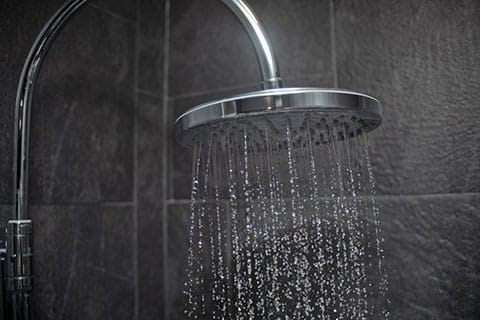
4. Low-Flow Showerheads and Faucets
Heating water is one of the leading energy expenses in a typical home. And showering accounts for up to 20% of the average home’s indoor water use. Installing low-flow showerheads reduces the amount of water you use, which then reduces the cost of heating it. Switching to an ultra-low-flow showerhead can cut shower water use by as much as 70%.3
It’s the same story for faucets. Replacing a 2.5 gallon-per-minute (gpm) faucet with a stylish, high-efficiency faucet with a flow rate of no more than 1.5 gpm can save both energy and water.3
For both plumbing fixtures, there are a range of styles, features, and finishes. You can simply upgrade to a low-flow stainless steel or brushed nickel model with a standard shape. Or go for a more elegant look with brass or bronze with ornate handles and necks.
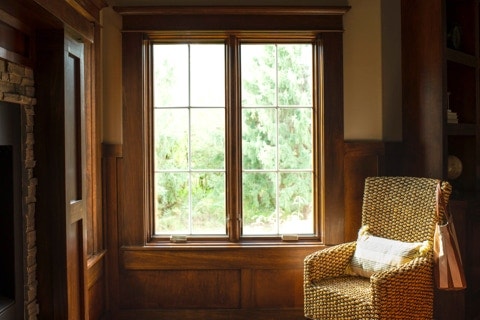
5. ENERGY STAR Replacement Windows
Inefficient windows are among the leading causes of high energy bills and low comfort. They can become warped, worn or drafty. Or they are just so dated that they lack the modern upgrades of energy-efficient windows.
To find the best energy-saving windows, again look for the ENERGY STAR logo. The average homeowner can save $101 to $583 a year on their heating and cooling costs by replacing single-pane windows with ENERGY STAR certified windows.4
ENERGY STAR windows offer the same range of style choices as standard replacement windows. In fact, the Pella® Lifestyle Series was designed specifically to blend style and energy efficiency. These stylish wood windows offer plenty of design flexibility and were even designated as one of the Most Efficient ENERGY STAR certified products in 2020.5
In addition to the ENERGY STAR logo, you also want to read the National Fenestration Rating Council (NFRC) label that comes on all windows. The window label shows two energy performance ratings: U-factor and solar heat gain coefficient (SHGC). In general, you want both these numbers to be as low as possible, especially in temperate climates. The lower the numbers, the better the window is at insulating and keeping out heat from the sun.
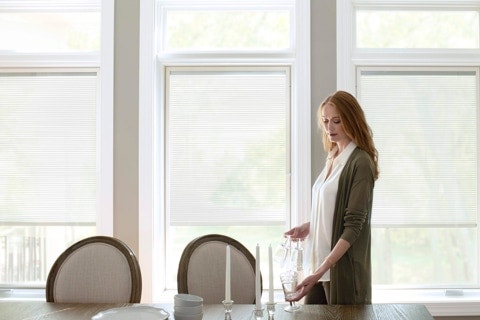
6. Window Treatments
There’s no doubt installing energy-efficient windows is a great way to save energy but don’t overlook window treatments. Whether it’s curtains, blinds, shades or shutters you prefer, you can style your windows any way you like. Here are a few ways to do it and save energy too:
- Awnings – Adding a little awning to the outside of your window can reduce solar heat gain in the summer by up to 65% on south-facing windows and 77% on west-facing windows.6
- Interior blinds – Blinds are more effective at reducing summer heat gain than winter heat loss. When completely closed and lowered on a sunny window, highly reflective blinds can reduce heat gain by around 45%.6
- Drapes – With light interiors that face the window, drapes can help reflect light and aid cooling in the summer. Medium-colored draperies with white-plastic backings can reduce heat gains by 33%.6 In the winter, most conventional draperies can reduce heat loss from a warm room up to 10%.6 Install them close to the window, overlap the edges and let them fall to the floor or windowsill for maximum efficiency.
- Shades – Pleated or cellular shades with dead air spaces in the center help increase insulation.
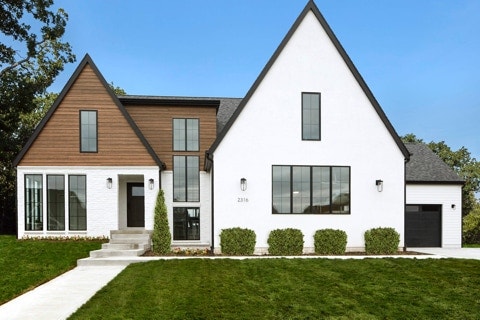
7. Landscaping
Most homeowners are so focused on upgrading the inside of their home that they forget about the outside. But landscaping plays an important role in the energy efficiency of your home, providing shade and blocking wind.
Finding the right landscaping for your home depends largely on the climate, but also on the terrain immediately surrounding your home. Deciduous trees (trees that drop their leaves in winter) planted on the south side of your home help shade the house in summer while allowing the sun to reach it in the winter. Groundcover plants and shrubs can shade the pavement around the house and help cool the air before it gets to your home’s walls and windows.
Be sure to use plant species that are adapted to the local climate. Energy-efficient landscaping that uses plants that require little water also helps to keep your water bills down.
1https://energy.gov/sites/prod/files/2017/09/f37/Energy_Saver_Guide-2017-en_0.pdf
2http://www.house-energy.com/Floors/Energy-efficient-flooring.html
3http://www.thegreenspotlight.com/2010/08/high-efficiency-water-saving-plumbing-fixtures/
4Ranges are based on the average savings among homes in modeled cities. Actual savings will vary based on local climate conditions, utility rates, and individual home characteristics. For more information, visit energystar.gov.
5Some Pella products may not meet ENERGY STAR guidelines in Canada. For more information, contact your local Pella sales representative or go to energystar.gc.ca.
6https://energy.gov/energysaver/energy-efficient-window-treatments
Schedule a free consultation to find windows and doors for your home.
